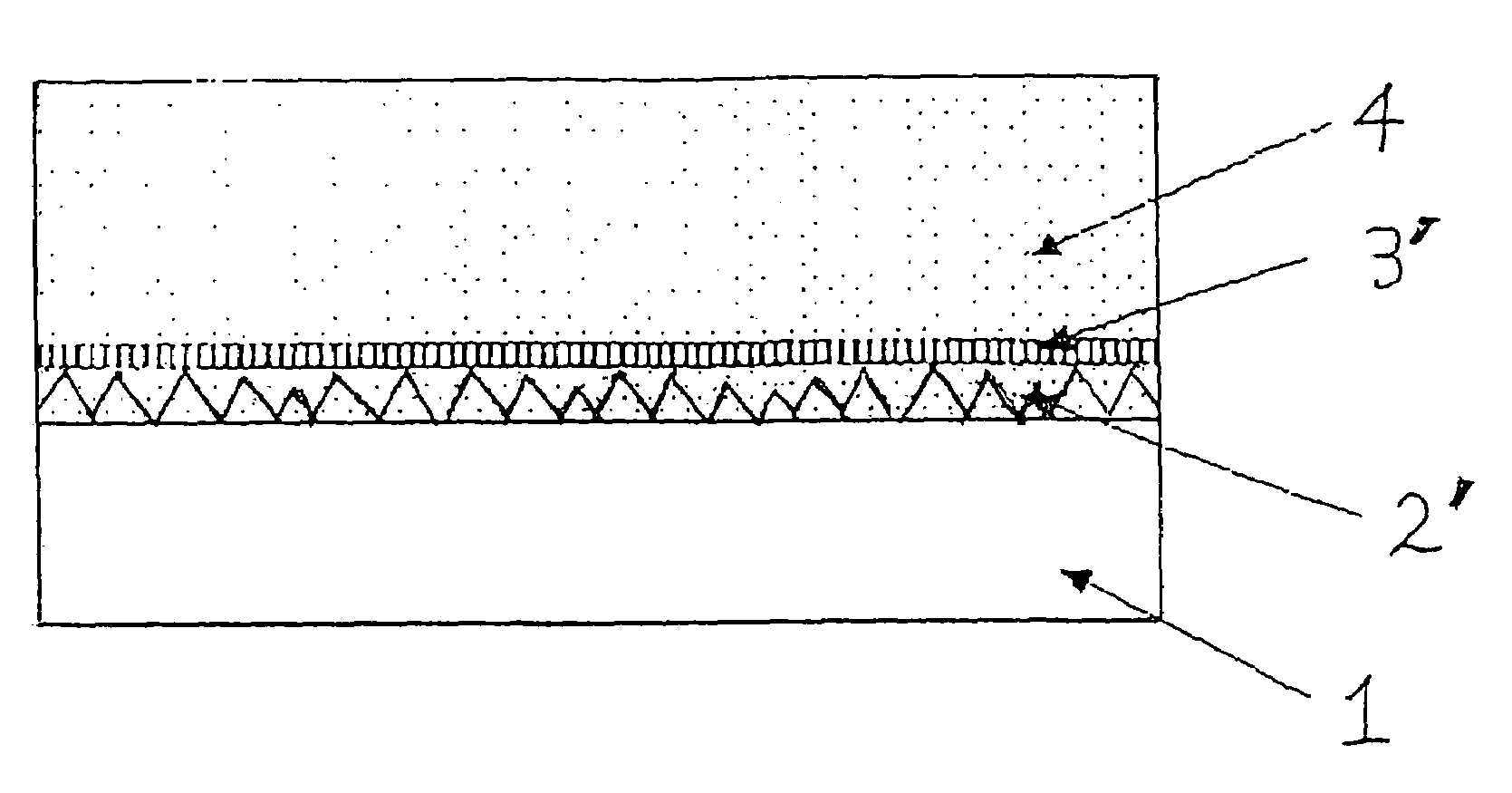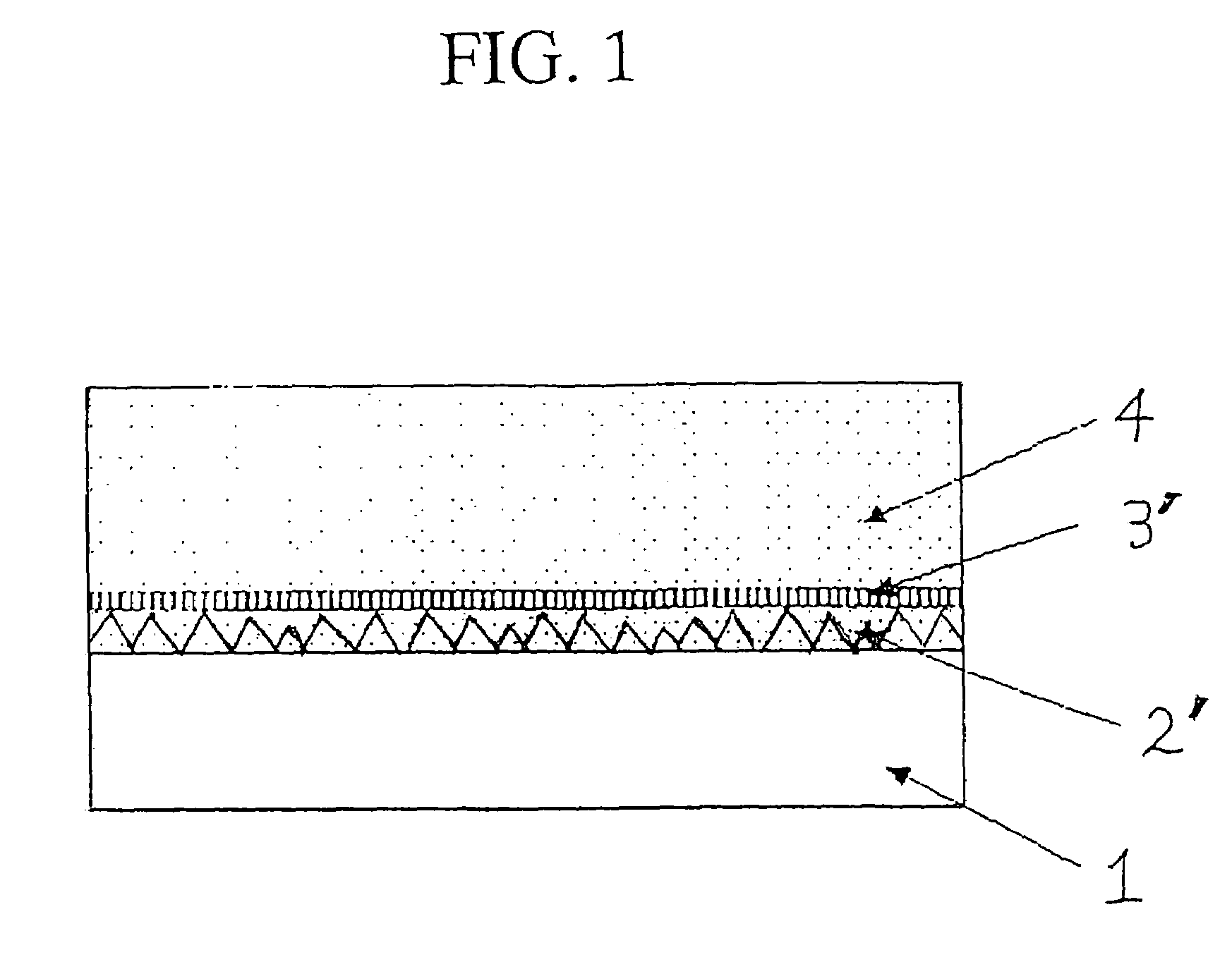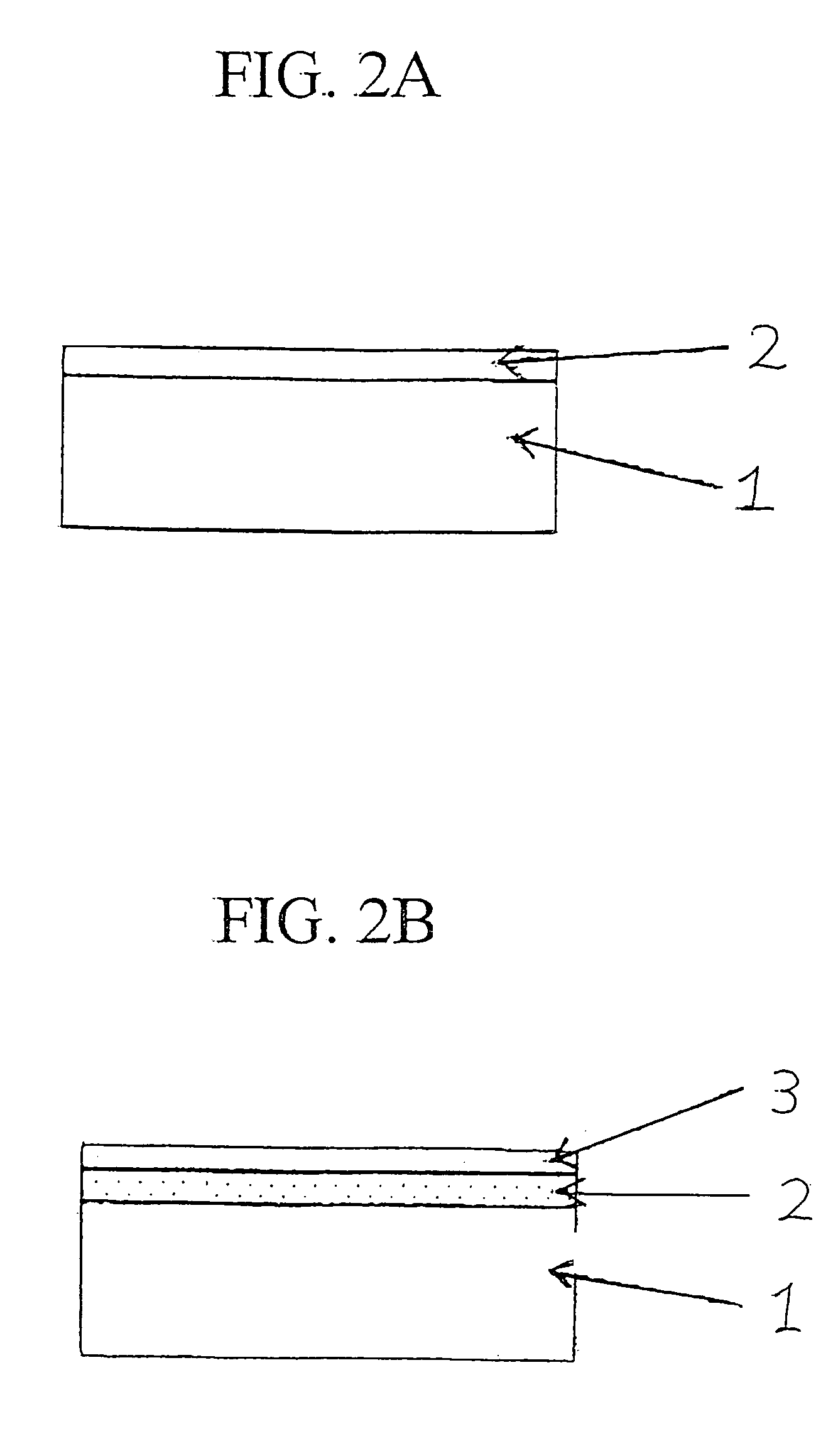Epitaxially grown nitride-based compound semiconductor crystal substrate structure with low dislocation density
a compound semiconductor and crystal substrate technology, applied in the direction of crystal growth process, semiconductor laser, sport apparatus, etc., can solve the problems of difficult to realize, complex and time-consuming process of forming the patterned siosub>2 /sub>mask, and difficult to realize a desired crystal growth, etc., to and reduce the dislocation or defect density level
- Summary
- Abstract
- Description
- Claims
- Application Information
AI Technical Summary
Benefits of technology
Problems solved by technology
Method used
Image
Examples
example 1
[0111]A single crystal sapphire substrate was prepared, which has a diameter of 2 inches and a surface with C-plane. An undoped epitaxial GaN layer with a thickness of 400 nanometers was deposited on the C-plane of the single crystal sapphire substrate by MOCVD using trimethyl gallium (TMG) and NH3 as source gases. A titanium film with a thickness of 20 nanometers was formed by evaporation on the undoped epitaxial GaN layer. The substrate was subjected to an X-ray diffraction measurement, a result of which is shown in FIG. 3. It was observed that the titanium film has a crystal orientation to [0001].
[0112]The substrate was put into a reaction chamber of MOCVD system. An ammonia gas containing 20% of H2 gas was continuously supplied to the chamber. A heat treatment was carried out at 1050° C. for 30 minutes in the presence of a gas flow of NH3 and H2, whereby the titanium film is nitrated to form a titanium nitride film. The heat-treated substrate was again subjected to an X-ray diff...
example 2
[0113]With reference to FIG. 2A, a single crystal sapphire substrate 1 was prepared, which has a diameter of 2 inches and a surface with C-plane. An undoped epitaxial GaN layer 2 with a thickness of 400 nanometers was deposited on the C-plane of the single crystal sapphire substrate 1 by MOCVD using trimethyl gallium (TMG) and NH3 as source gases.
[0114]With reference to FIG. 2B, a titanium film 3 with a thickness of 20 nanometers was formed by evaporation on the undoped epitaxial GaN layer 2.
[0115]With reference to FIG. 2C, the substrate was put into a reaction chamber of MOCVD system. An ammonia gas containing 20% of H2 gas was continuously supplied to the chamber. A heat treatment was carried out at 1050° C. for 30 minutes in the presence of a gas flow of NH3 and H2, whereby the titanium film 3 is nitrated to form a titanium nitride film 3′.
[0116]With reference to FIG. 2D, subsequently, without exposing the substrate to an outside atmosphere, the substrate was subjected to a furth...
example 3
[0122]A single crystal sapphire substrate was prepared, which has a diameter of 2 inches and a surface with C-plane. An undoped epitaxial GaN layer with a thickness of 500 nanometers was deposited on the C-plane of the single crystal sapphire substrate by MOCVD using trimethyl gallium (TMG) and NH3 as source gases. A titanium film with a thickness of 25 nanometers was formed by evaporation on the undoped epitaxial GaN layer. The substrate was put into a reaction chamber of MOCVD system. An argon gas containing 20% of H2 gas was continuously supplied to the chamber. A first heat treatment was carried out at 1050° C. for 10 minutes in the presence of a gas flow of Ar and H2. Subsequently, a second heat treatment was carried out at 1050° C. for 30 minutes in the presence of a gas flow of NH3 and H2. Thereafter, without exposing the substrate to an outside atmosphere, the substrate was subjected to a further epitaxial growth 1050° C. with supplying trimethyl gallium (TMG) and NH3 as sou...
PUM
| Property | Measurement | Unit |
|---|---|---|
| depth | aaaaa | aaaaa |
| porosity rate | aaaaa | aaaaa |
| dislocation density | aaaaa | aaaaa |
Abstract
Description
Claims
Application Information
 Login to View More
Login to View More - R&D
- Intellectual Property
- Life Sciences
- Materials
- Tech Scout
- Unparalleled Data Quality
- Higher Quality Content
- 60% Fewer Hallucinations
Browse by: Latest US Patents, China's latest patents, Technical Efficacy Thesaurus, Application Domain, Technology Topic, Popular Technical Reports.
© 2025 PatSnap. All rights reserved.Legal|Privacy policy|Modern Slavery Act Transparency Statement|Sitemap|About US| Contact US: help@patsnap.com



